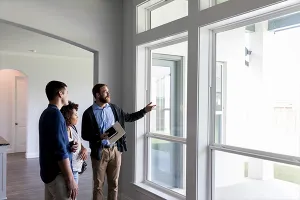Thirty-two firefighters, police officers and U.S. Coast Guard members tapped into a placemaking program offered by the Michigan Association of REALTORS® (MAR) and the Traverse Area Association of REALTORS® (TAAR) that allows emergency medical providers and other first responders to live where they work.
The initiative was funded in part with Ira Gribin Workforce Housing Grant dollars given by the NATIONAL ASSOCIATION OF REALTORS® to the Michigan Association of REALTORS®, which is participating in a larger placemaking project along with Michigan State University, the Michigan Association of Home Builders, Michigan State Housing Development Authority and others that is called “Building New Places that Create Prosperity in Michigan.”
Placemaking is the idea that promoting, creating and even building new walkable mixed-use development will benefit the quality of life, promote energy efficiency and will create an environment that will be attractive for businesses to locate, and more importantly stay, and help drive economic development. Homes at price points the working class can afford is key to any successful placemaking efforts.
Traverse Area Association of REALTORS® Executive Vice President Kimberly Pontius said MAR provided $26,000 from its $75,000 Ira Gribin Workforce Housing Grant. The local Traverse Area Association of REALTORS® kicked in another $7,000 to make the local homeownership program possible.
Kathie Feldpausch, senior vice president of MAR, said the project underscores how well the state association works with its local REALTOR® partners. “It’s a great example of collaboration.”
Pontius said $1,500 was provided to each family to help with closing costs on houses in the community where they could work and save lives, but until recently couldn’t afford to live. While they are educated and “make a good living,” Pontius said, “they are just not making a good enough living” to have afforded the neighborhood where they work.
Instead of calling Grand Traverse home, these vital workers were forced to live 20 or even up to 50 miles away from their work, Pontius said.
Long distances mean long commutes for police officers, firefighters, paramedics and others. In addition to rising fuel costs, wear and tear on vehicles and congestion on roads, traveling long distances also means time delays — which makes no sense, Pontius said.
“It’s important for them to be incorporated into the community where they work and be close to their base of operations,” Pontius said. “These are the people who are going to come pull you from your house when it’s on fire. You want these people to be as close to you as they can be.”
While the TAAR piloted the successful program, it was the brainchild of the Community Housing Choices and the Grand Traverse Region Housing Task Force, which work to ensure sufficient housing choices for working families in the region. The financial assistance was available for about one year, said Pontius, beginning in the second quarter of 2010 and running through the second quarter of 2011.
Pontius said the success of the program showed that there was a need for it in the northwest Michigan community that ranks high on vacation destination hot spot lists for its autumnal foliage and its shorelines in the summer.
“We did it to identify a need, to show a solution to fulfill the need,” he said. “It was an idea that was put into play, and we were hoping with its story, with its success, the [county] would review it and say we should continue it,’’ he said.
And so it did. Instead of being funded with grant dollars, future funding for the placemaking initiative will come from the sales of sheriff-owned properties.
While those dollars generally have gone into the county’s general fund to be used to help cover the costs of municipal operations, the success of the Grand Traverse placemaking program convinced local officials to direct some of the revenue into what is known as the Grand Traverse Housing Fund.
“It is more and more apparent some solutions are going to have to be locally driven,” Pointus said. “Sometimes we are going to have to solve our regional issues within our own region.”
MAR directed a little less than one-third of its $75,000 Ira Gribin grant toward the Traverse project and used the remainder of the funding, along with an additional $50,000 contribution from the W.K. Kellogg Foundation, to conduct a hedonic analysis of placemaking attributes on property values. The initial analysis was conducted in Lansing and early results show that placemaking attributes that drove value included proximity to water, schools, bookstores, restaurants and Michigan State University. Attributes that decreased value included proximity to sports arenas and locations in commercial areas that included grocery stores as well as being located near a freeway.
The analysis also contained a review of barriers to including workforce housing in placemaking projects. Thirteen developers, 20 bankers and 23 local government officials were interviewed for the analysis. The analysis shows that 70 percent of the bankers agreed that placemaking needs to be an important part of Michigan’s future but that just 30 percent of them had actually financed any placemaking projects. Developers were less likely to see the importance of placemaking in Michigan’s future with just 61 percent saying it was important. Additionally, 31 percent said they were neutral or not sure that placemaking would play a role in future economic development.
The findings were shared with a legislative forum this summer. MAR will continue its research efforts in this area as its partner in the work, the Michigan Housing Development Authority, just awarded a contract to MAR to continue its work and expand the scope of the analysis.
Interest in and funding for the placemaking analysis, said MAR’s Feldpausch, “is growing exponentially.”








